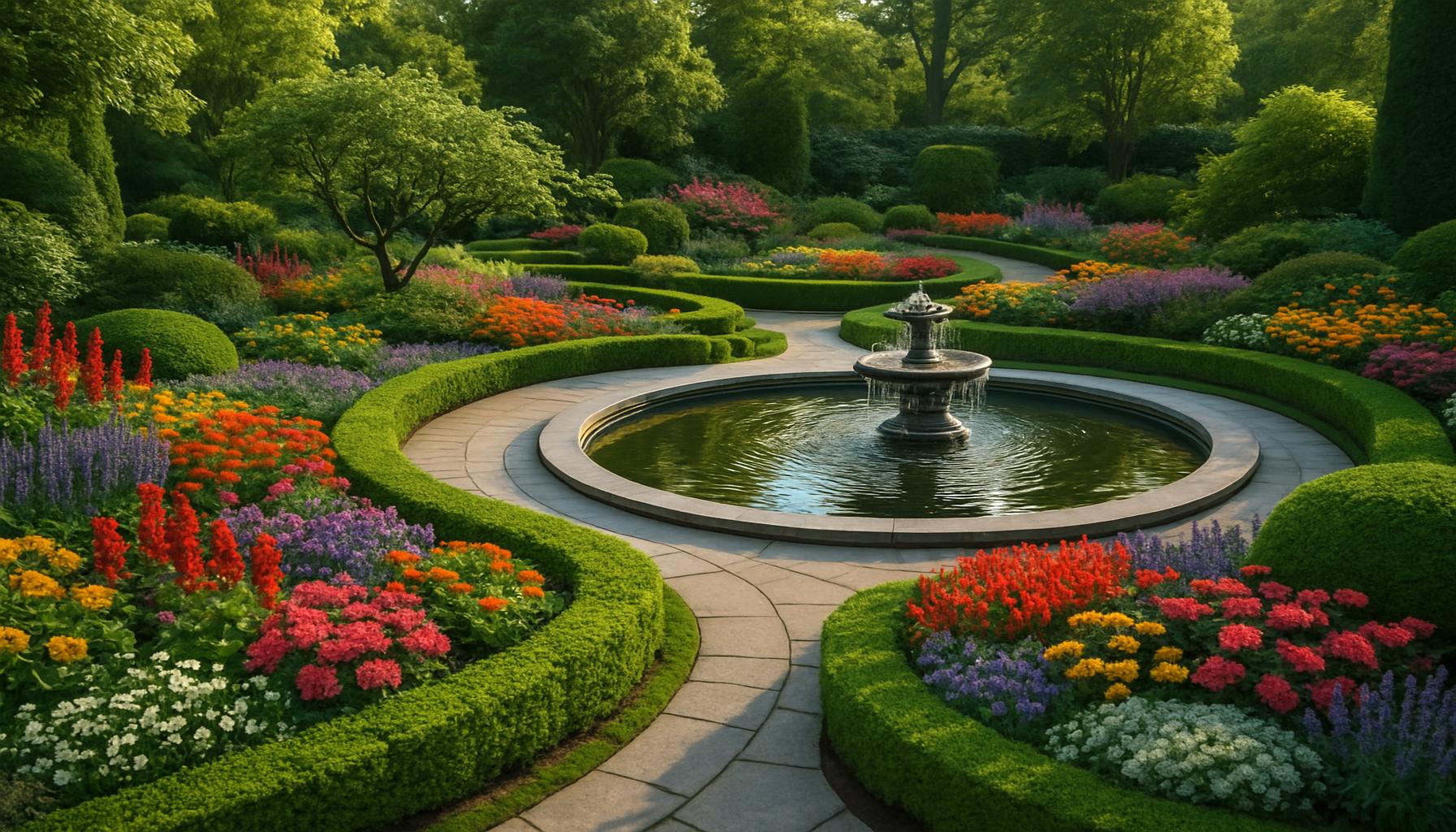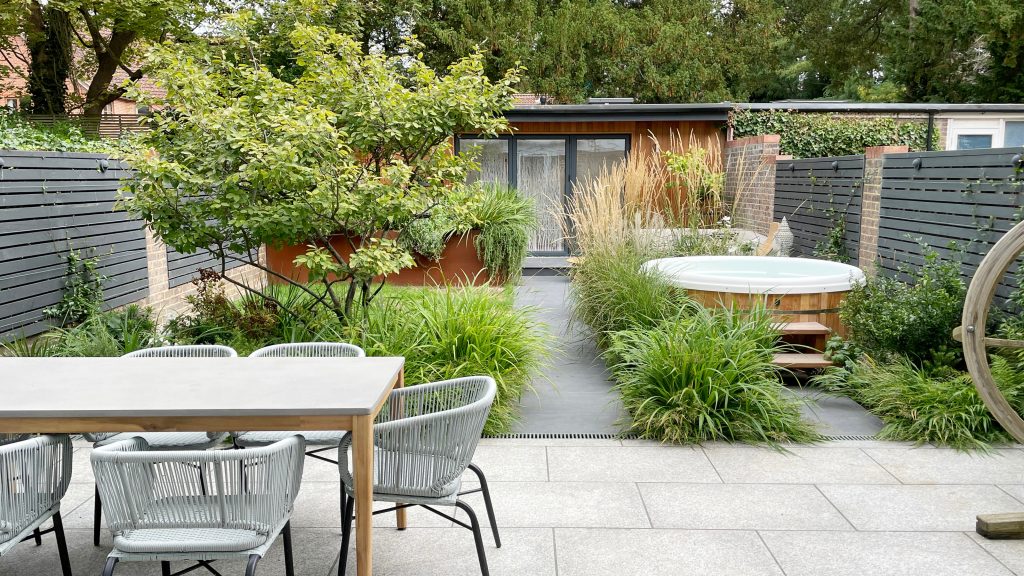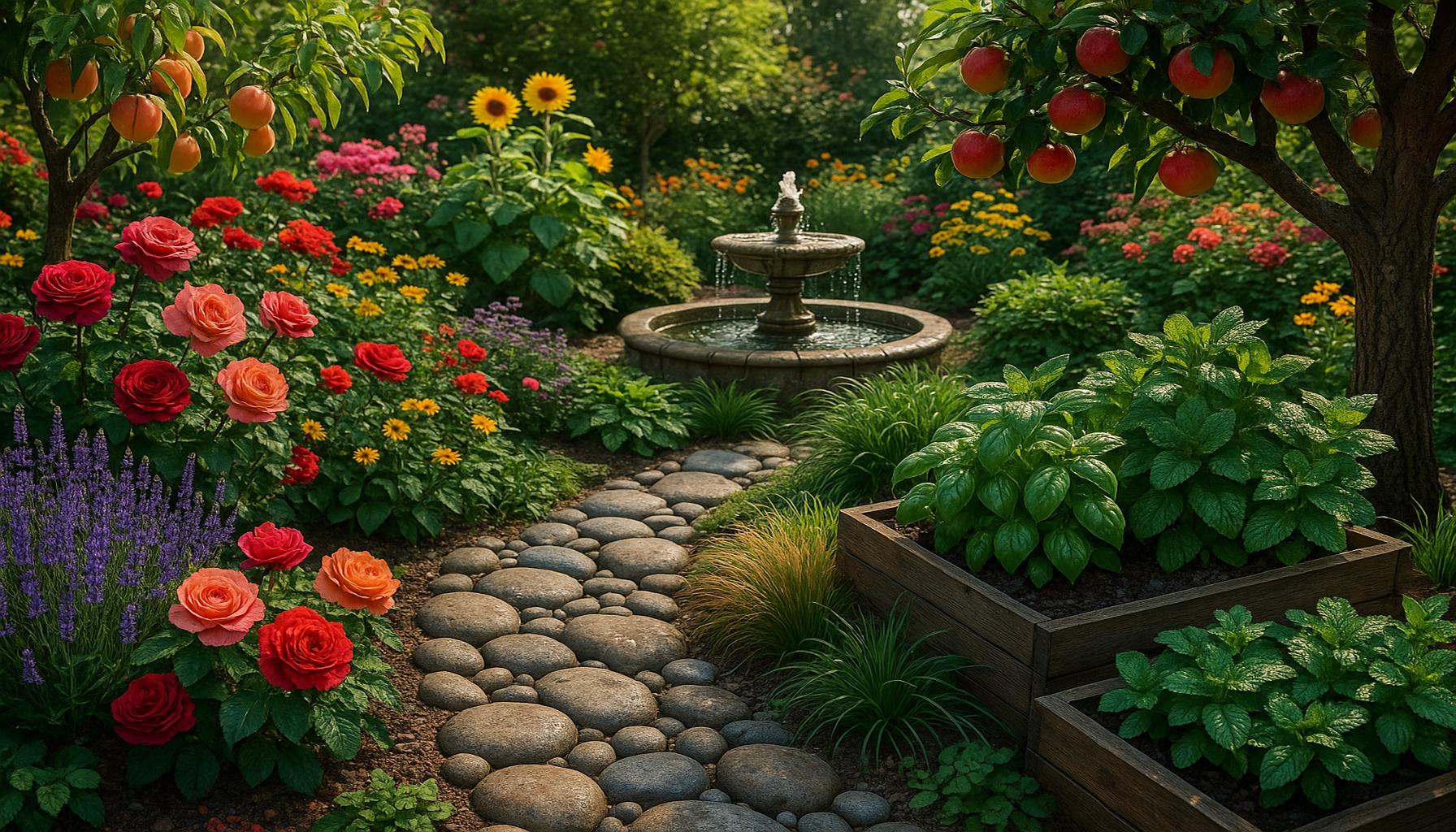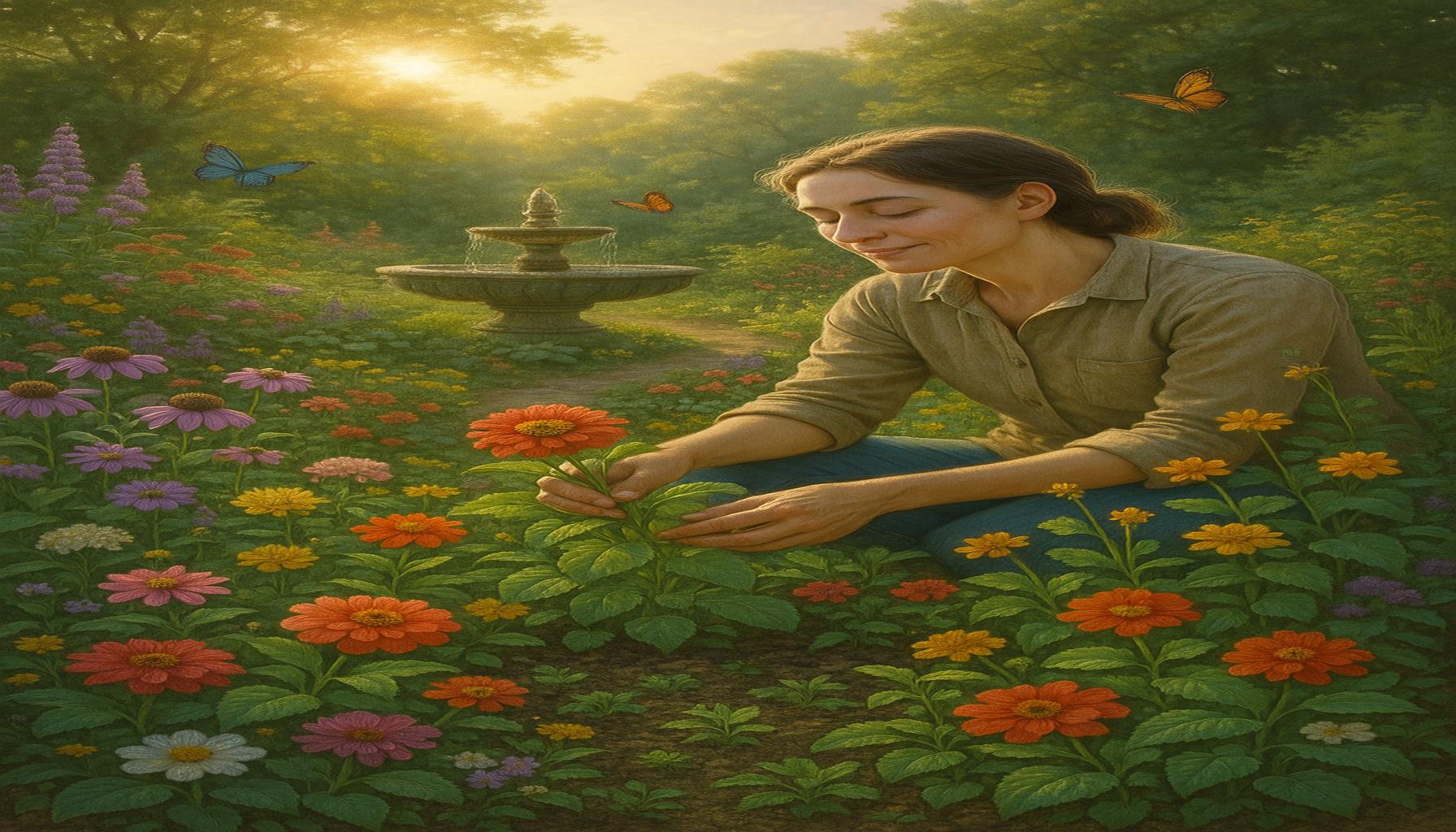Gardening as an Art Form: Landscape Design Techniques to Transform Outdoor Spaces

Unveiling the Essence of Outdoor Creativity
Gardening transcends mere planting; it is a dynamic art form that redefines how we perceive and interact with our environments. Through the artful arrangement of colors, shapes, and textures, landscape design creates immersive outdoor spaces that inspire serenity and joy. The transformative power of gardening lies in its ability to evoke emotions and memories, sparking creativity in both seasoned professionals and enthusiastic novices alike. Whether it’s a vibrant suburban backyard filled with seasonal blooms or a minimalist urban balcony adorned with succulents, gardeners can create personal sanctuaries that reflect their tastes and personalities.
Key Elements of Landscape Design
Transforming any outdoor area into a visually appealing landscape requires a keen understanding of several key elements:
- Color Theory: Selecting harmonious color palettes ensures that flowers and foliage complement each other. For example, contrasting vibrant colors like yellows and purples can draw the eye, while softer pastels create a calming vibe. Knowledge of color theory allows gardeners to evoke specific feelings and atmospheres in their spaces.
- Texture: Mixing different plants with various leaf shapes—such as tall grasses alongside broad-leafed bushes—adds depth and interest. The interplay of smooth and rough textures not only appeals to the eyes but also engages the sense of touch, making the garden an immersive experience.
- Scale and Proportion: Balancing large and small features is crucial for creating a sense of harmony. For instance, pairing towering sunflowers with low-growing marigolds can create a visually engaging landscape that draws attention and maintains viewer interest.
Engaging with these aspects allows gardeners—from novices to professionals—to craft unique visions tailored to their surroundings. In regions across the U.S., whether it be a small urban backyard or a sprawling estate, leveraging design techniques can significantly elevate the outdoor experience, transforming bland spaces into striking showcases of nature’s beauty.
Incorporating Nature’s Best
Understanding the relationship between natural elements and human interaction is vital for transforming any outdoor space. Techniques to achieve this include:
- Pathway Creation: Clearly defined pathways not only direct traffic flow but also enhance aesthetics, guiding visitors through the landscape. Choosing materials like gravel, wood, or stone can create distinct looks that complement the surrounding flora.
- Layering: Utilizing plants of varying heights adds depth to the landscape. For example, planting taller perennials at the back of a garden bed and shorter varieties at the front creates a visually appealing layered effect that draws the eye upwards.
- Seasonal Interest: Selecting plants that provide visual appeal throughout different seasons ensures that your yard remains vibrant year-round. Incorporating evergreens, perennials that bloom at various times, and autumn foliage can create a dynamic and changing landscape throughout the year.
Embarking on a journey to master gardening as an art form allows you to craft stories through plant placements, where every element has a purpose and a narrative. Thoughtful design can breathe life into dull spaces, transforming them into joyful oases that invite exploration and reflection. As you delve deeper into the world of landscape design, you’ll discover an endless array of possibilities waiting to be explored. The canvas of nature is yours to shape and inspire, so pick up your trowel and let your creativity flourish!

DISCOVER MORE: Click here to uncover the psychological benefits of artistic hobbies
Understanding the Landscape Canvas
Gardening is not solely about planting and tilling; it is an intricate art form that combines creativity with an understanding of natural ecosystems. To effectively transform outdoor spaces, gardeners must view their landscapes as canvases, involving meticulous planning and execution of design principles. The artistry of landscape design lies in crafting environments that not only reflect beauty but also harmonize with the surrounding ecology. It is about creating spaces that resonate with human emotions while encouraging wildlife, fostering biodiversity, and promoting sustainability.
Principles of Design in Gardening
Several fundamental principles of design are vital for gardeners aiming to elevate their landscapes. These concepts not only guide the creative process but ensure the outdoor space functions well and feels inviting:
- Unity: Creating a cohesive look throughout the garden is essential. This can be achieved through consistency in plant selection, color schemes, and materials used in hardscaping—elements such as pathways, patios, and retaining walls. A unified design invites a sense of serenity, making the outdoor space feel intentional and thoughtfully planned.
- Balance: Achieving balance in a garden involves distributing visual weight evenly, whether through symmetry or asymmetry. For example, a pair of identical ornamental trees on either side of a walkway provides symmetrical balance, while varying plant heights and types can create an engaging form of asymmetrical balance that feels natural and dynamic.
- Focal Points: Every garden should have a striking element that draws the eye—be it a vibrant flower bed, a unique sculpture, or a serene water feature. By strategically placing focal points, designers can guide visitors through the landscape and encourage exploration, making the entire space feel lived-in and inviting.
Incorporating these principles can significantly improve the visual and emotional impact of any outdoor landscape. For gardeners in regions across the United States—whether designing a native wildflower patch in the Midwest or a tropical paradise in Florida—the application of these design concepts offers endless opportunities for creativity and expression. Embracing the balance of aesthetic appeal and practical functionality is key to transforming your surroundings into a personal masterpiece.
Environmentally-Conscious Design Techniques
As awareness of environmental sustainability grows, modern gardeners are increasingly integrating eco-friendly techniques into their designs. This not only enhances the aesthetic but also contributes to the ecological health of the area:
- Native Plant Selection: Choosing plants that are indigenous to the region can dramatically improve a garden’s sustainability and resilience. Native species require less maintenance, such as watering and fertilization, and they foster beneficial relationships with local wildlife, including pollinators and birds.
- Water Management: Incorporating water-wise design elements, such as rain gardens or drip irrigation systems, conserves water while enhancing the garden’s appearance. Proper water management techniques encourage healthy plant growth and contribute to an eco-friendly environment.
- Soil Health: Prioritizing soil health through organic amendments and techniques like composting nurtures the ecosystem. Healthy soil enhances plant growth and reduces reliance on chemical fertilizers, making your garden more self-sustaining.
Exploring these environmentally-conscious techniques enriches the gardening experience while contributing positively to the planet. As gardeners delve into the artistry of landscape design, they are reminded that their outdoor creations can be powerful statements of beauty and sustainability, leading the way to a greener future.
Design Techniques to Enhance Your Outdoor Space
When considering gardening as an art form, it’s essential to delve into various landscape design techniques that adeptly meld aesthetics and function. Each method emphasizes purposeful interaction between the land, flora, and structures, creating harmonious outdoor environments that sustain both beauty and utility.One fundamental technique is the use of focal points. These deliberately chosen elements, such as sculptures, water features, or meticulously grouped plants, draw the eye and energize space, encouraging exploration. Effective focal points can transform an ordinary garden into an extraordinary visual narrative. Furthermore, the concept of layering in gardening adds depth to landscapes. By varying plant heights, textures, and colors, gardeners can create dynamic vistas that change with the seasons. Incorporating a mix of perennials, annuals, and ornamental grasses will not only provide year-round interest but also invite local wildlife into the garden, enhancing its ecological balance.Another vital aspect of artistic gardening is the adherence to principles of unity and harmony. This means selecting plants and materials that complement each other, creating a cohesive look throughout the space. Whether utilizing a consistent color palette or thematic elements, a gardener can ensure that both the natural and built environments coexist beautifully.Moreover, sustainable practices are paramount in contemporary landscape design. This entails selecting native plants that thrive in local conditions while minimizing water usage and supporting biodiversity. By focusing on sustainability, one embraces a gardening approach that respects the environment while conserving resources.In essence, these techniques are not merely methods but represent an evolving dialogue between nature and human creativity. Embracing a holistic design philosophy allows gardeners to tap into their artistic expression while crafting landscapes that resonate with grace and purpose, transcending mere gardening into the realm of art. Explore further into these techniques to uncover how your outdoor space can truly become a masterpiece.
DIVE DEEPER: Click here to discover sustainable crafting ideas
Innovative Gardening Techniques to Enhance Landscape Design
As the world of gardening continues to evolve, enthusiasts are exploring innovative techniques that elevate traditional practices into a modern art form. This blend of creativity, technology, and environmental consciousness offers gardeners a plethora of tools and methods to craft stunning outdoor environments. The following design techniques not only enhance the aesthetic appeal of gardens but also serve practical purposes, cultivating spaces that breathe life into their surroundings.
Vertical Gardening
Vertical gardening has gained traction as an effective solution for maximizing space, especially in urban settings where outdoor space is limited. By utilizing vertical surfaces—such as walls, fences, and trellises—gardeners can create lush green displays that save ground space while also adding visual intrigue. Vertical planters, living walls, and trellised vines are perfect examples of how this technique can transform a blank space into a vibrant focal point. Moreover, vertical gardens can be filled with a diverse range of plants, from colorful flowering species to productive vegetables, allowing for a flexible choice of both style and function.
Seasonal Planting Strategies
To ensure a garden remains dynamic and engaging year-round, seasonal planting strategies are essential. This approach involves selecting plants that thrive during different seasons, allowing for a continual display of color and interest. For instance, spring-blooming tulips and daffodils can give way to summer’s radiant sunflowers and hydrangeas, which can then transition into autumn hues of chrysanthemums and asters. Association with seasonal planting creates not only visual appeal but also encourages biodiversity by supporting various pollinators throughout the year, ultimately enhancing the ecological value of the space.
Integration of Art Elements
Incorporating artistic elements into landscape design can profoundly impact the overall vibe of a garden. This may include sculptures, pottery, or handcrafted seating areas, all serving as points of interest that invite contemplation and engagement. Garden art can echo the styles and themes of the plants and flowers chosen, creating a unified aesthetic experience. Furthermore, utilizing reclaimed materials and local craftsmanship can foster a deeper connection between the garden and the surrounding community, making the art truly reflect its environment.
Utilizing Color Theory
Understanding color theory in landscape design is crucial for creating harmony and emotion within outdoor spaces. Different colors evoke distinct feelings: vibrant reds and yellows stimulate energy and excitement, while soothing greens and blues foster calmness and tranquility. Gardeners can harness the psychological effects of color by thoughtfully arranging flower beds and plant varieties to elicit desired emotional responses. For instance, a serene seating area can be easily enhanced with soft pastel blooms and lush greenery, providing a peaceful retreat from daily life.
Creating Outdoor Rooms
For those looking to enhance the usability of their gardens, designing outdoor rooms has become a popular trend. These defined spaces can serve various purposes—such as dining, relaxation, or even cooking—encouraging occupants to spend more time outdoors. Strategically placed seating arrangements, sheltering structures like pergolas, and the use of pathways to connect these areas turn the garden into a functional and inviting living space. Incorporating elements such as fire pits, water features, or even outdoor kitchens can elevate these areas, making them perfect for gatherings and family activities.
Through embracing these innovative landscape design techniques, gardeners have the potential to transform their outdoor spaces into living works of art that reflect personal values, encourage ecological stewardship, and foster community connections. Each technique offers an opportunity to deepen the relationship between people and nature, ensuring that gardens remain not just beautiful, but also meaningful.
DISCOVER MORE: Click here to unleash your creativity
Conclusion: Embracing Gardening as an Art Form
In conclusion, the exploration of landscape design techniques has illuminated the profound potential of gardening as an artistic expression. By integrating innovative practices such as vertical gardening, seasonal planting, the incorporation of art elements, colour theory, and the creation of outdoor rooms, gardeners can reshape their environments into stunning visual narratives that resonate with both personal style and ecological awareness. These methods highlight the transformative power of greenery and design, allowing spaces to serve not just aesthetic purposes but also functional and emotional needs.
As urban landscapes continue to expand and evolve, the importance of cultivating outdoor areas that nourish both the spirit and the environment cannot be overstated. Embracing gardening as an art form enables individuals to reflect their uniqueness while also fostering community ties through shared outdoor experiences. Furthermore, this artistic approach empowers gardeners to make informed choices that contribute to biodiversity and environmental balance, ultimately benefiting our ecosystems.
For those eager to delve deeper into the world of landscape design, there is a plethora of resources available—from workshops and online courses to local gardening clubs—that encourage collaboration and learning. The journey of transforming outdoor spaces into living artwork is not only rewarding but also serves as an open invitation for creativity and connection. With every plant chosen and every design element incorporated, we have the opportunity to make our gardens not just beautiful, but also meaningful and impactful.


